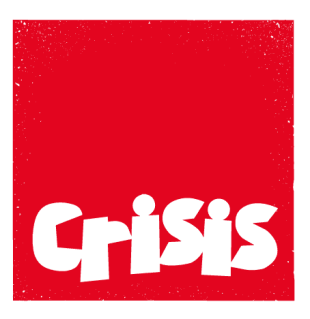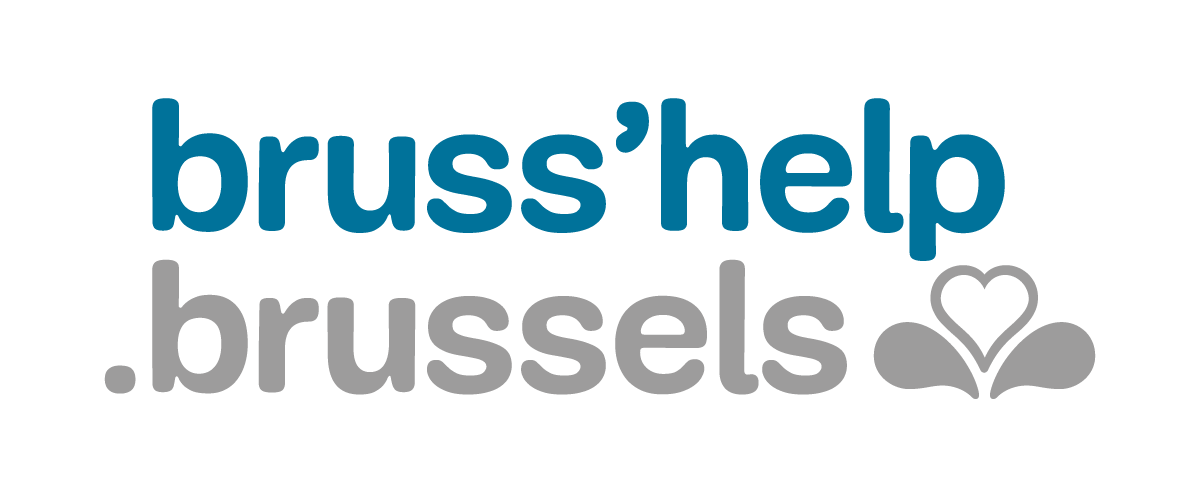Through Partnership
1/ Governance: coordination and operationalization
In an integrated approach, governance means bringing together not only organizations but also people around common goals. They rely on each other’s expertise and split resources to achieve their common goal.
As the integrated approach brings along diversity of stakeholders, communication channels between decision-making, operational level and beneficiaries are crucial to maintain and feed.
Steering Committees

RIGHTS FIRST : Bruss'help
- The steering committee made of the homelessness services providers and the public service in charge of implementing homelessness ending policies met regularly to discuss implementation strategies following a workplan and objectives.
- This steering committee was extended to other public stakeholders having direct connections with the objectives of the project at regional, federal and European level including the co-funders of the projects. This committee met every 6 months and delivered feedback on the issues raised during the meetings whether they were successful or not.
- The steering committees were supported by a scientific committee assisting in the monitoring and evaluation process of the project. They helped developing the key performance indicators and analyse the data.
Roles and responsibilities, data sharing (including GDPR regulations), budget arrangements were stated in agreements with the co-funders of the project, the project coordinator and the partners.
Working group of social workers

RIGHTS FIRST : Bruss'help
Each partner appointed social workers to test out the innovative solutions while providing assistance to homeless people. The originality of this team was that homelessness services providers and a public social welfare center were represented. In the spirit of exchanging best practices and in regard to professional ethics, they sought advice on difficult coachings, organize joint coachings as well as shared operational concerns or positive outcome from their experience on the field with the steering committee.
Partnerships with internal and external stakeholders

SKYLIGHT : CRISIS
Skylights work in partnership with both internal and external partners to ensure we support members to end homelessness sustainably. Internally, we do this through working with colleagues in the Policy and Social Change Directorate, seeking to use the evidence based in practice, to influence the policy changes needed to both prevent and end homelsnessness. This could be at both a local level, through changes to local systems, to a national level, influence legislative changes to ensure the statutory safety net to support people is robust. Within services we use our flexibility to test and learn new approaches to ending homelessness. For example, in London and Newcastle, funding Housing First Projects, working with the most marginalised and excluded members to provide ongoing and open-ended support or in Swansea and Liverpool, through Critical Time Intervention Project working with people leaving prison to establish themselves in local communities to leave homelessness behind for good.
Skylights also work with a range of both statutory and voluntary sector partners across the UK. We do this again, member by member. Advocating to ensure members access the statutory services available to end their homelessness, helping to navigate often complex systems. We also work to influence partners locally, helping to influence local system change and piloting new ways of working to evidence how, together, working with partners, we can improve people's lives and prevent and end homelessness.
Buidling an alliance

INSULA : Sant Joan De Déu
Since 2019 collaboration between the 4 organizations enables to accompany people in a specialized way and reach for the best solutions at every moment for the project.
Each organization contributes with its expertise in the corresponding field:
Sant Joan de Déu serveis socials: Coordination of the project and carries out the social support of the project.
Formació I Treball: give support in the employment area, coordination with the labor technician is constant and fluid both with the team professionals as with related participants.
Fundació Mambré: Coordination work is done on entries and exits, formalities and contract renewals, and care management. In 2023 it starts managing new grants for renting (Garantim), which will involve some changes in the contracts and ending with practically all rent grants.
Càritas diocesan of Barcelona: Referrals are done to the legal counseling department above all in migration issues and regarding some people to support needs in psychological area.
Contacts and coordination have been established with the different local Social Services where the homes are located. In particular, meetings have been held to study ways of collaboration with Prat del Llobregat, Sant Boi de Llobregat, Esplugues de Llobregat, L’Hospitalet de Llobregat (municipalities in the metropolitan area of Barcelona) to establish a shared strategy for accompanying people and not duplicate resources. From 2020 INSULA is part of the Vulnerable Community Care Network in the Prat del Llobregat. In Barcelona, INSULA participates in the XASPLL (Homeless Care Network) with presence in the working groups of inclusion flats and access to housing.
From the beginning the technical commission which represents the four organizations has met quarterly, which has allowed the project to develop and evolve.
An institutional commission has maintained annual contact. Good results of the collaboration of the alliance among the four organizations made possible an upscaling of INSULA and to generate other specialized projects such as Vesta (single parents families profiles) or Futur&Co (youth homeless profiles).
2/ Monitoring and Evaluation
Monitoring and evaluation tools serve three purposes:
1) Ensuring the project progresses as planned: measuring efficacity, efficiency, relevancy coherence and related risks of the project helps to control and maintain its quality and whether its outcome will be achieved. This can be done with classical project management tools from the logframe, risks analysis, workplan to budget forecast, etc…
2) Verifying the extent in which the outputs positively impact the target public: measuring the impact on the target public and tailor the measures to ensure they contribute to the expected outcome. This implies identifying key performance indicators (quantitative or qualitative) and seeking ways to collect, process and analyse the data.
3) demonstrate convincing results with scientific data.
It is important to have determined a baseline, the situation from which the monitoring is set to start. Therefore, it is recommended to have a monitoring tool ready to function before the project implementation phase. All of those steps will help to draw conclusions, facilitate decision-making and eventually contribute to policy improvements.
Project’s progress and impact

RIGHTS FIRST : Bruss'help
- 1. Control and maintain its quality and whether its outcome will be achieved.
- As of testing social innovations on a homeless target group, Rights First set up multiple solutions to test out on the field. Each of those solutions was provided a fiche in which was a description of the solution and its evolution from its implementation to the end of the project. Based on qualitative data, the fiches were available to all members for use or information.
- Questionnaires to evaluate the partnerships were also forwarded to the members. They aimed at understanding where they stand throughout the project and how they builded the integrated approach.
- With the help of an academic researcher, key indicators of performance were identified to have an overview of the beneficiaires’s evolution. The data collection allowed to analyse the impacts of the innovative solutions on the beneficiaries’ situation at predetermined times: the time they enter the project, the project’s midterm and the project end’s time.
2. The outputs positively impact the target public:
Monitoring and Evaluation to improve governance

SKYLIGHT : CRISIS
Client Services Procedure and Governance team sits within the Client Services Directorate to fullfill the following purposes:
- Work with the Client Services Senior Leadership Team (CSLT), service managers, member facing staff and members across Crisis services to develop and review key policies and procedures for Client Services that will support staff in their work with members.
- Ensure that internal audits of services are carried out regularly, covering key areas such as safeguarding, lone working and case management.
- Proactively work with the Member Database (NotAllowedScript695fa687bb8fdMAPS), Data and Technology and Research and Evaluation teams on the development of reports for trustees, client services managers and staff.
- Work in partnership with the other members of the Client Services Service Development Group (CSSDG), including the Volunteer Advisory Panel (VAP) and the Experts by Experience Network to deliver improvement projects designed to support continuous improvement of ways of working across all Crisis Client Services.
CSSDG (Client Services Service Development Group) CSSDG oversees, co-ordinates and manages the development and review of Client Services policies and procedures, as well as other development and improvement projects and priorities agreed by CSSLT.
It is also one of the places where decisions are made about questions or issues that have arisen from the Communities of Practice (which are run by the Best Practice team).
Monitoring and reporting across Client Services: The Procedure and Governance team work in partnership with Client Services teams and CSSLT to produce quarterly reports regarding:
- Incidents
- Complaints
- Safeguarding
- Key performance indicators (KPIs).
Participatory monitoring and evaluation

INSULA : Sant Joan De Déu
From its design, quantitative and qualitative evaluation has been examined at INSULA, identifying key indicators, to control the project quality and to be able to improve and measure its impact.
For the quantitative evaluation, data from beneficiaries’ files is collected and analysed twice a year.
For the qualitative evaluation, every 6 months, participants of the project evaluate their perception of improvement in regard to the previous period. The results of recent years indicate that 80% perceive an improvementor a stabilization of their situation. The level of satisfaction is assessed annually with also high results.
The positive results allow the project hypotheses to be validated as it shows that social support allows people to define a project for the future and get out of the situation of exclusion .
The project has also demonstrated flexibility and adaptations towards different groups (single parent families and young people) and could be adapted to groups such as elderly people, etc.
The Insula project has ISO 9001:2015 quality management certification with annual audits as well as economic, data protection audits to guarantee the achievement of standards and regulatory legislative frameworks of ISO regulations and is audited annually to contribute in rigor ways to its methodology.
All information disclosed reflects the opinion of the author only. The European Commission is not responsible for any use that may be made of the information.
![]()







